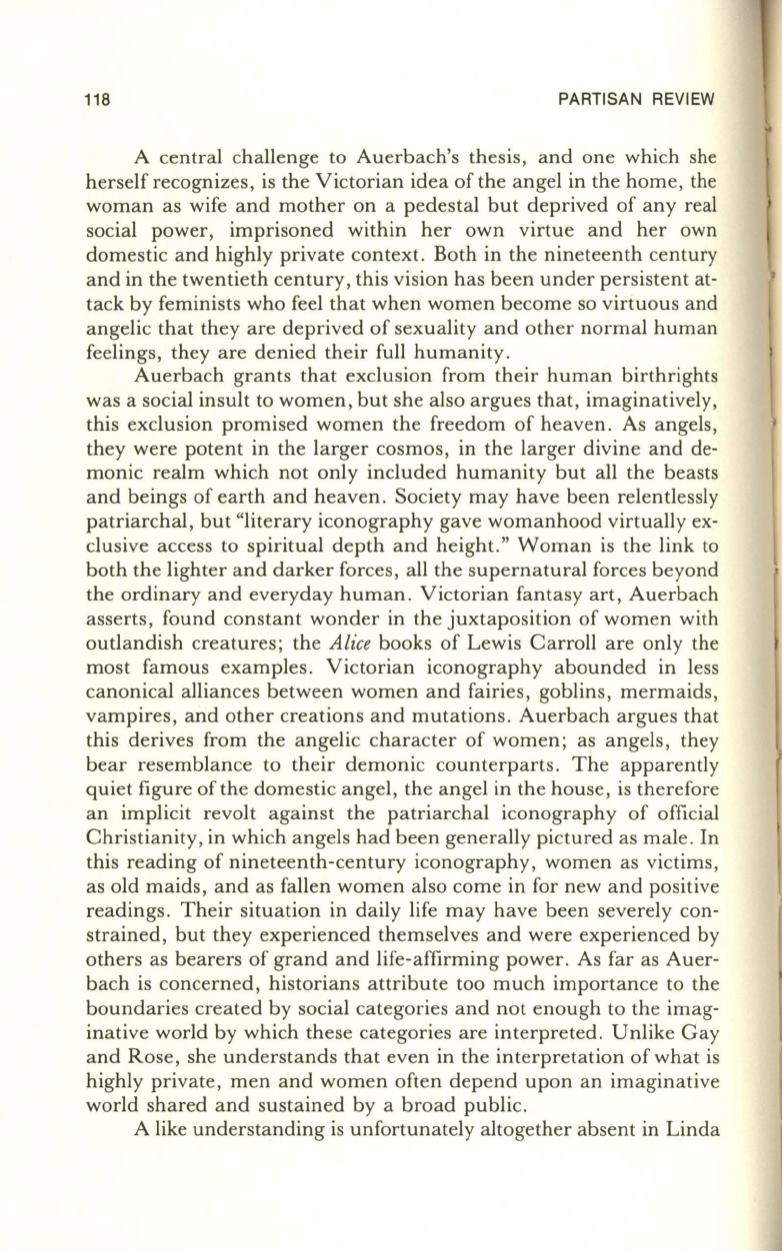
118
PARTISAN REVIEW
A central challenge to Auerbach's thesis, and one which she
herself recognizes, is the Victorian idea of the angel in the home, the
woman as wife and mother on a pedestal but deprived of any real
social power, imprisoned within her own virtue and her own
domestic and highly private context. Both in the nineteenth century
and in the twentieth century, this vision has been under persistent at–
tack by feminists who feel that when women become so virtuous and
angelic that they are deprived of sexuality and other normal human
feelings, they are denied their full humanity.
Auerbach grants that exclusion from their human birthrights
was a social insult to women, but she also argues that, imaginatively,
this exclusion promised women the freedom of heaven. As angels,
they were potent in the larger cosmos, in the larger divine and de–
monic realm which not only included humanity but all the beasts
and beings of earth and heaven. Society may have been relentlessly
patriarchal, but "literary iconography gave womanhood virtually ex–
clusive access to spiritual depth and height." Woman is the link to
both the lighter and darker forces, all the supernatural forces beyond
the ordinary and everyday human. Victorian fantasy art, Auerbach
asserts, found constant wonder in the juxtaposition of women with
outlandish creatures; the
Alice
books of Lewis Carroll are only the
most famous examples. Victorian iconography abounded in less
canonical alliances between women and fairies, goblins, mermaids,
vampires, and other creations and mutations. Auerbach argues that
this derives from the angelic character of women; as angels, they
bear resemblance to their demonic counterparts. The apparently
quiet figure of the domestic angel, the angel in the house, is therefore
an implicit revolt against the patriarchal iconography of official
Christianity, in which angels had been generally pictured as male. In
this reading of nineteenth-century iconography, women as victims,
as old maids, and as fallen women also come in for new and positive
readings. Their situation in daily life may have been severely con–
strained, but they experienced themselves and were experienced by
others as bearers of grand and life-affirming power. As far as Auer–
bach is concerned, historians attribute too much importance to the
boundaries created by social categories and not enough to the imag–
inative world by which these categories are interpreted. Unlike Gay
and Rose, she understands that even in the interpretation of what is
highly private, men and women often depend upon an imaginative
world shared and sustained by a broad public.
A like understanding is unfortunately altogether absent in Linda


